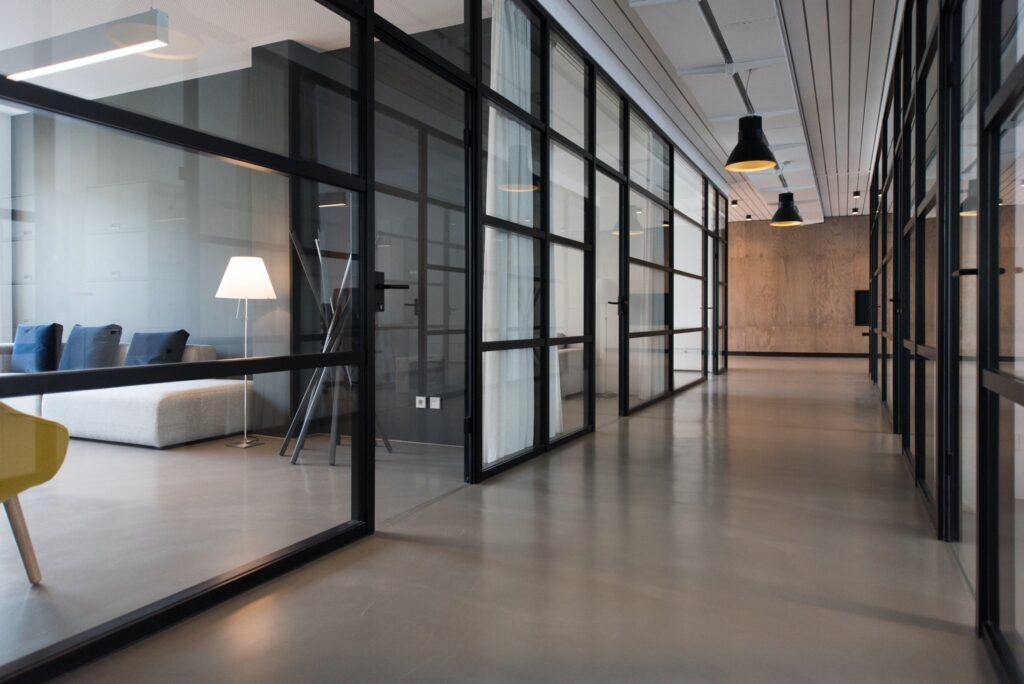In an era of dynamic changes in the labour market and the growing importance of flexibility and innovation, office design is also evolving to meet new challenges. On the one hand, ergonomics and comfort are important, and on the other hand, so too are flexibility and the ability to choose where to perform duties. The COVID-19 pandemic has made people and companies realise that offices provide more than just a desk to work at. They are now seen as places allowing for interactions that are not possible over video chat. One of the latest trends is the pivot space model. This innovative idea involves creating multifunctional, flexible office spaces that can be easily transformed according to the needs and requirements of employees and the organisation.

Pivot space – one space, many functions
The pivot space concept offers the opportunity to make better use of office space and increase work efficiency by adapting it for different uses. The idea is to create a flexible space where it is possible to meet with clients, work comfortably on a project, hold a team meeting or discuss business matters with employees who are working from home.?
The rotating space can easily be transformed into a communal area, an individual workstation or a conference room. The flexibility of this approach aims to foster creativity, collaboration and communication between employees. As a result, it leads to greater efficiency and job satisfaction.
The flexible hybrid model and the workplace
Working all the time at one desk is a thing of the past. It is not just about the hot desking concept that is gaining a lot of popularity, but also about the fact that in today’s reality, employees perform a variety of duties (phone calls, client meetings, presentations, training and so on). Increasingly, they are using video conferencing to deal with business matters or meetings with colleagues, which require different conditions than face-to-face conversations in an open space.?
Flexibility and the ability to adapt to changing needs have become key features of modern offices. The modern worker should have access to an ergonomic workstation that can be easily adapted to both individual and team work. Examples include Hushoffice acoustic cabins, which enable an efficient use of space, for online meetings and conceptual work.?
Rotating office areas – increasing workplace functionality
The concept of pivot space, or rotating workspaces, relies heavily on furniture. Modular tables, sofas and mobile partitions can be designed to define a spatial hierarchy. Acoustic office cubicles equipped with modern technology are places, in which teams can brainstorm, clients can discuss matters important to them and colleagues can talk comfortably.?
There is no single way to create a rotating workspace, but solutions such as acoustic cubicles, the location and purpose of which can be changed, are a good choice for long-term flexibility.?
How can the pivot spaces concept be implemented in the workplace?
A rotating workspace can become a reason for employees to come to the office willingly. It provides a place, in which people can perform duties according to their own needs and preferences and interact with those around them to feel like part of the community. When designing multifunctional office space areas, it is important to take into account the diversity of the workforce and provide solutions tailored to working methods and preferences.?
Multifunctional workstations for individual work
Rotating spaces are a modern solution also designed to support individual work in open office spaces. Acoustic cabins such as hushHybrid provide the ability to focus on the task at hand and offer privacy, without being isolated from the rest of the team. The adjustable depth of the tabletop guarantees comfort during longer video conferences and presentations or when working on a difficult project. Glass walls muffle sound while allowing visual contact with the team. Features include power and USB sockets, eye-friendly lighting and effective ventilation.
Pivot spaces – support for customer and team interaction?
Rotating spaces enable a seamless transition between individual work and team collaboration, which promotes efficiency in dynamic office environments. They facilitate informal discussions and short deliberations, contributing to better team collaboration and communication. However, it is not just about creating a welcoming environment for staff. Pivot spaces should be adapted to support customer interaction during digital presentations and face-to-face negotiations. Office acoustic cubicles, such as the four-person hushMeet, which are not only aesthetically pleasing but also functional, can be used for this purpose. Thanks to their excellent sound-absorbing properties, they allow meetings to be conducted in comfort, without any disturbances from their surroundings. A multi-person acoustic booth can easily be transformed from a group work room to a relaxation area or teleconference venue.

